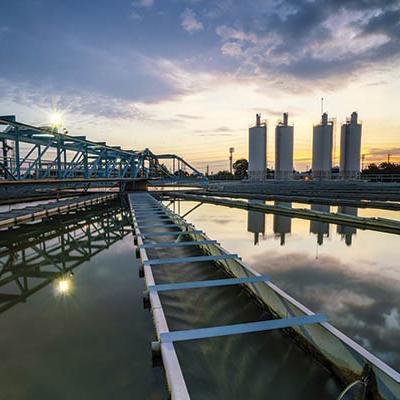
Wastewater treatment has become an increasingly critical part of plant operations over the past decade, and manufacturing companies in all industrial sectors are prioritizing the reduction of water consumption. Compliance with ever-tightening federal regulations for wastewater treatment, handling, and disposal requires finishing-industry executives to focus on the issue. Additional motivating factors for recycling wastewater include strengthening a company’s public image, improving the overall work environment, boosting employee morale, and adhering to ISO 14001 initiatives.
The ultimate motivator is almost always related to cost. From a strictly monetary standpoint, it makes complete sense for finishing shops to adopt a formal wastewater treatment and reuse policy, as it allows them to dramatically cut rising operational costs while increasing profitability. Most of the hazardous waste in surface finishing comes from wastewater that is generated by rinse water.
The obvious goal should always be to recycle wastewater internally. This will increase equipment life, improve product quality, reduce maintenance, and prolong the usage of working fluids. Implementing a treatment system means, when the time comes to dispose of wastewater, finishing shops can virtually eliminate the volume for disposal or haul-away.
At the heart of any system is the equipment. There are several options available, each designed to perform specific types of treatment and deliver a quick return on investment (ROI).
Ultrafiltration (UF) systems: The concentration and chemical form of the soluble heavy metals in a wastewater stream varies, depending on the industry and the mix of operations at a processing site. The advanced membrane technology used in UF provides a simplified, effective, and superior solution for removing soluble heavy metals. UF systems allow finishing operations to reuse as much as 98% of their surface-finishing wastewater without the use of chemical additives.
Membrane technology provides numerous advantages to the process of surface-finishing wastewater treatment, including:
Reverse-osmosis systems: RO technology removes dissolved solids and impurities by using a semi-permeable membrane that allows the passage of water but leaves the majority of dissolved solids/salts and other contaminants behind. A properly designed and operated RO system can remove as much as 99.5% of incoming dissolved salts and impurities, as well as virtually all colloidal and suspended matter from the most challenging waste and feed-water applications. Typically used in industrial, metalworking, and surface-treatment operations, RO technology is the final process after ultrafiltration or the chemical treatment of waste and feed water.
Vacuum evaporation and distillation: Evaporation is a natural phenomenon and a clean separation technology recognized as a best-available technique (BAT) in several wastewater-treatment processes. Because it removes the water from the contaminants, rather than filtering the contaminants from the water, it is distinct from other separation processes. Vacuum evaporators treat and distill industrial wastewater amounts from 1 to 120 tons per day. They are capable of achieving residual total solids concentrations of more than 85%.
The three primary vacuum evaporators are:
Paper-bed filters: These types of filters work by gravity and use disposable paper media or permanent filter media. This produces a positive barrier that removes solids from all free-flowing industrial process liquids. Paper-bed filters are suitable for applications involving low- to medium-stock removal of ferrous and non-ferrous metals, as well as organic and inorganic contaminants such as glass, rubber and plastic. Paper-bed filters can extend coolant and tool life by an average of 27%, in addition to increasing surface-finish quality.
Solid-bowl centrifuges: These units optimize centrifugal force (instead of consumable media) to separate solids from liquids in metal-processing applications where removal of fines is important for recycle and reuse goals. Process liquid is either pumped or gravity-fed to the centrifuge inlet. Process solids are then centrifugally separated from the liquid phase and collected in an easily removable rotor. Clarified liquid overflows the rotor into the outer case and is returned by gravity to the process. Solid-bowl centrifuges provide high-performance liquid/solid separation for all types of particles.
Tramp-oil separators: In this wastewater treatment solution, contaminated fluid flows through a series of baffles and a porous media bed, where free and mechanically dispersed oils are separated from the fluid. The clarified fluid then flows over an effluent discharge wier back to the reservoir for reuse. The oils, inverted emulsions, and other waste materials are collected at the top of the separator and automatically discharged into a suitable receptacle. Using gravity flow and coalescence, these separators can reduce tramp oils to less than 1% in a single pass while using no consumable products.
Vacuum filters: Capable of continuous operation, vacuum filtration systems can eliminate downtime. Virtually maintenance-free and delivering high-sludge-volume elimination, the systems will also deliver lower production costs. Disposable-media vacuum filters use a vacuum chamber to draw contaminated coolant through the disposable filter media. By applying the principle of optimal filtration through contaminant or sludge build-up, a filter cake forms on the media. These units are capable of flow rates as high as 2,000 gpm. EP
Tim Hanna is Vice President of Business Development for PRAB, Kalamazoo, MI.

The version of this editorial was published on efficientplantmag.com.